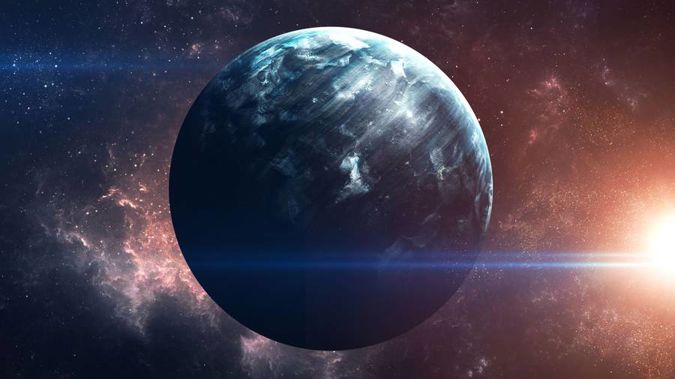
Conspiracy Theorists were right again, here is a collection of news reports coming out over the "discovery" of a 9th planet in our solar system. NASA finally admits to Planet X or Planet 9
NASA's Getting Closer to Discovering Mysterious Planet Nine
Sputnik International 20h ago
9th planet does exist: NASA
The Hans India 21h ago
Researchers cite more evidence on likely 'Planet Nine' existence
Orlando Sentinel Oct 16, 2017
More ArticlesIce giant Planet Nine a reality: NASA
Deccan Chronicle Oct 16, 2017
Nasa Hasn't Confirmed Existence of Planet 9: What We Know about the "Planet" At the Edge of the Solar System
Yahoo News UK Oct 16, 2017
Mysterious Planet Nine does exist in our solar system, believes NASA
Times Now Oct 16, 2017
NASA admits the mysterious Planet Nine is real, but says 'deadly' Nibiru is a fraud
NEWS.com.au Oct 15, 2017
'Super Earth' ninth planet likely to exist - but won't crash into us: NASA
Yahoo7 News Oct 15, 2017
Nasa confirms a 'super-Earth' exists in our solar system
Newstalk ZB Oct 15, 2017
NASA Had To Release A Statement Explaining That Planet Nine 'Nibiru' Won't Kill Us
Huffington Post Australia Oct 15, 2017
The mysterious 'super Earth' lurking on the edge of our solar system
9news.com.au Oct 15, 2017
NASA Confirms Existence Of Mysterious 'Planet 9'
Hit 107 Oct 15, 2017
NASA Reignites Debate On The Mysterious Planet Nine Located On The Edge Of The Solar System
The Inquisitr Oct 14, 2017
NASA Suspects a Ninth Planet Could be in Our Solar System's Outer Edges
Outer Places Oct 14, 2017
We're closer than ever to finding the mysterious Planet Nine
Wired.co.uk Oct 14, 2017
Ninth planet of solar system does exist, believes NASA
Zee News Oct 14, 2017
Solar System may have a ninth planet: NASA
News Nation Oct 14, 2017
NASA admits the mysterious world called Planet Nine does exist on the edge of our solar system
Herald Sun Oct 16, 2017
*************************************************************
NASA has stated that it's
quite likely that our solar system is home to a massive, distant ninth
planet. Its existence could shed light on some burning questions about
the cosmos.
Planet Nine
Earlier this month, NASA issued a press release stating that it’s likely that our solar system has a ninth planet—even if it’s proving difficult to find.
The planet could have a mass ten times that of Earth’s, and be situated twenty times as far from the sun as Neptune. It’s being referred to as “Planet Nine,” and while it’s very difficult to procure clear evidence of its existence, some scientists are absolutely convinced that it’s out there.

“If you were to remove this explanation and imagine Planet Nine does not exist, then you generate more problems than you solve. All of a sudden, you have five different puzzles, and you must come up with five different theories to explain them.”
The Evidence
In a 2016 paper, Batygin and co-author Mike Brown detailed six known objects in the Kuiper Belt that behave rather strangely. All of them have elliptical orbits pointing in the same direction, and all of those orbits are tilted the same way. Both of these traits serve as clues to the presence of Planet Nine.Computer simulations that took the hypothesized planet into account indicated that there should also be several other bodies with more extreme tilts from the solar plane, on the order of 90 degrees. Brown realized that astronomers are already aware of five such objects, meaning nature did fit with the simulations.
Planet Nine would also explain why the plane in which the other planets orbit is tilted about six degrees away from the sun’s equator: over time, Planet Nine’s distant gravity has made the entire solar system plane wobble away from center.
Finally, there are the objects in the Kuiper belt that orbit in the opposite direction of everything else in our solar system.
“No other model can explain the weirdness of these high-inclination orbits,” explained Batygin. “It turns out that Planet Nine provides a natural avenue for their generation. These things have been twisted out of the solar system plane with help from Planet Nine and then scattered inward by Neptune.”
Based on the behavior of these distant objects, the astronomers believe the planet to be a Super-Earth, a massive rocky planet that is extremely common in the universe—but which our solar system, oddly, lacks. The planet could have coalesced out in the cold reaches of our system over millions of years, formed close to the sun and then been flung outward, or even been captured by the Sun from another system.
Batygin and Brown are using the Subaru Telescope at Hawaii’s Mauna Kea Observatory to continue their search for Planet Nine. According to Batygin, this telescope is the best tool available to hunt down something dim and distant in the vast expanse of sky.
However, Planet Nine isn’t the only explanation for the orbital behaviors observed. A recent survey of the outer solar system found over 800 trans-Neptunian objects. A random distribution of this matter could also potentially have the same effect on the tilt on the traits observed in various orbits—but the jury is still out.
Source: Futurism